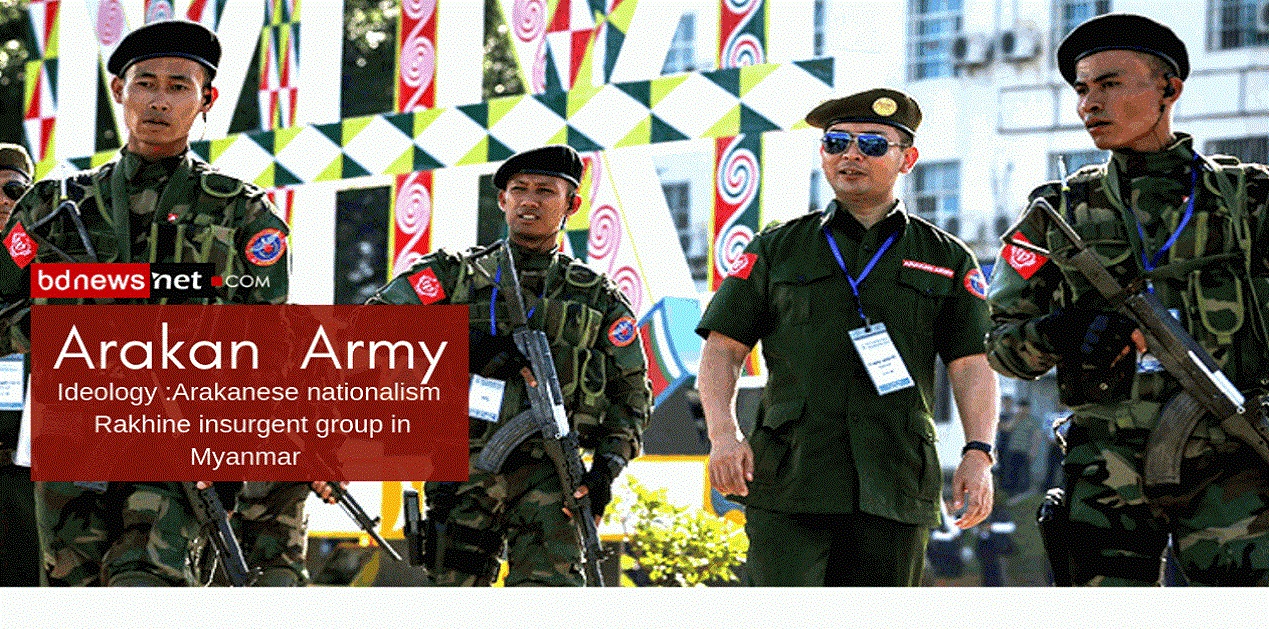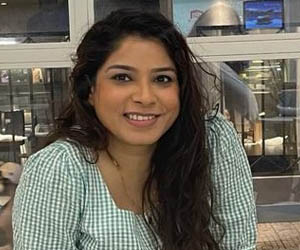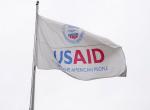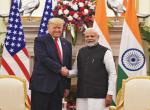On 10 April 2009, the separatist Arakan Army (AA) established itself as a “revolutionary armed organisation” in Myanmar. Till 2015, it operated in Kachin and Shan States under the guidance of the Kachin Independence Army (KIA) with headquarters in Laiza. Politically, it is a member of the Federal Political Negotiations and Consultative Committee (FPNCC), a group of seven Ethnic Armed Organisations (EAO) in Northeast Myanmar. Militarily, AA is a member of the Northern Alliance as well as the Three Brotherhood Alliance.1 This article highlights the growth of AA over the past decade.
On 10 April 2020, the AA celebrated its 11th Anniversary and marked a new chapter in Myanmar’s conflict process, especially since the Myanmar Government declared AA and its political arm, the United League of Arakan (ULA), as “Unlawful Association” on 23 March 2020. The 11th Anniversary Day speech by self-designated Commander in Chief (C-in-C), Major General Twan Mrat Naing reiterated the motivations and aspirations of the AA and the Arakanese people to continue their struggle towards the liberation and adopt the “Way of Rakhita”.2 The “Way of Rakhita” is an attempt to rekindle memories of the once-powerful Arakan Kingdom, which was defeated by the Bamar Konbaung dynasty in 1784, and motivate the Arakan people and the AA soldiers.3 In his speech the Twan Mrat Naing said, “We are not only engaged in the ground battles but contesting each battlefront such as informational intelligence field, the frontline of psychological warfare, organising operations, legitimacy, and international law, and the diplomatic field from which our struggle can receive international support and good perception.”4
To address these challenges, he laid down three broad agendas. First, to strengthen the AA and to undertake the tasks of the revolution that has been construed as “struggling by organising; organising by struggling, training by fighting; fighting by training.” The second agenda was to challenge the Burmese racism and colonialism. The C-in-C, called out for the launch of a national revolution to ensure the development of Arakan for future generations. As the third agenda, the C-in-C emphasised on establishing public relations as one of the essential tasks in this long struggle. Hecommanded the revolutionary fighters of the AA to treat people with full respect, abiding by the rules and regulations of the Army. He appreciated people’s support and said, “One of the main reasons why the Arakan Army can firmly stand up and resist full-force offensive attacks of the enemy is because the entire population of Arakan supports us. People are the main roots of the revolution”. He asserted that the legitimacy given by the people of Arakan provides political recognition to the AA even when the government designated it as an unlawful organisation and therefore, cooperation with the people is kept as one of the key agendas for the AA.
According to the statement on AA’s official website, “The main objective of the Arakan Army (AA) is to defend the Fatherland of Arakan and to protect all peoples of Arakan. The presence of the Arakan Army in Arakan is to give peace, stability, security, freedom, justice and development to all peoples of Arakan irrespective of sex, race, religion and political belief.”5 The objective justifies its efforts to work towards self-determination, equality, and justice for the Arakan people, who have faced discrimination and alienation for centuries, as elaborated in the next section.
Background: Centuries of Alienation
The “Greater Arakan” has been documented to be 50 per cent larger than the area today, with the territories of Arakan Hill Tract in the present day Chin State and much more included in it. The kingdom reached its zenith with the rise of the capital at Mrauk-U during the 15th and 17th centuries CE. However, the feeling of humiliation started in the 18th century when the Konbaung King Bodawpaya overthrew the last Arakan King Thamada. The Konbaung ruler led a violent invasion leading to massive loss of lives and humiliation to the Arakanese people for a period from 1784 to 1824. Subsequently,the kingdom was invaded by the British (1824-1941), the Japanese (1942-45), then British again (1945-48). From 1948 to the present day, Rakhine has been under successive post-independence Governments. Since then, various armed opposition groups have been active in the Rakhine territory. 6
The AA aims to revive the lost glory of the Arakan soldiers and its people, who have felt socially, politically as well as economically alienated in the hands of the Bamar people. The Rakhine State is financially weak, marred by the slow growth rate of around five (05) per cent in the period 2005 to 2013, against the State average rate of about eight (8) percent in the same period. The per capita State Gross Domestic Product (GDP)revealed that Rakhine, along with Chin are the most impoverished States with per capita incomes of $171 and $31, respectively.7 This has been reiterated by the ‘Poverty Report - Myanmar Living Conditions Survey’ (2017), which states that poverty is most prevalent in Chin and Rakhine States. In Chin State, at an average, six out of ten people are poor, while in Rakhine State, four out of ten people are poor.8 It has been recorded that the Rakhine State (along with Chin State) have been left out of the convergence process of growth and development reported in other States. 9
The current crisis stems from the 2015 elections when the National League for Democracy (NLD) Government came to power. There was hope and anticipation amongst the Rakhine people that the Aung San SuuKyi led government would facilitate political reconciliation and recognition of the socio-political indentities of the Rakhine people. However, that was not to be and there was not much social or political engagement in the Rakhine State. Moreover, the disgruntlement with the Bamar dominated NLD ignited again after the NLD Government appointed its own Chief Minister despite winning just nine seats, as against the local Arakan National Party (ANP), which won 22 out of 35 seats in the 47 member Rakhine Hluttaw (Out of 47, 12 seats are reserved for the military representatives). 10 The arrest of the former ANP leader, Dr. Aye Maung, and his sentencing to 20 years imprisonment for treason in March 2019 has been one of the reasons for increasing tensions.11 In this background, where there was a lack of political agency to voice their concerns, the AA chief Twan MratNaing stated that the political objective of AA is to obtain confederate status for the Rakhine State, on the lines of Wa State.12
Challenges Faced by the Arakan Army
The first instance of AA’s involvement in the attacks on Tatmadaw took place on 29 March 2015 at Kyauktaw in Rakhine State and simultaneously at Paletwa in Chin State. In this attack, a Captain and two soldiers of Tatmadaw were killed, and the AA took four Tatmadaw soldiers as prisoners.13 The Government has refused to recognise the AA in the 2015 Nationwide Ceasefire Accord (NCA) as an Ethnic Armed Organisation (EAO), and since then there have been numerous attacks from both sides as well as heavy casualities.
The simultaneous attack by AA on 4 January 2019 at four border police outposts in North Buthidaung Township, Rakhine State, marked an escalation of the conflict. Following this attack, Myanmar Government directed the military to carry out counter-insurgency (CI) operations on 7 January 2019, and since then, the clashes have intensified. 14 The Tatmadaw has deployed a large force and uses air and artillery strikes against the AA. The patterns depict the use of its ageold “Four Cuts” doctrine to break the AA capabilities.15 General Ne Win, leader of 1962 military coup, inspired by Japan’s “three all” (“kill all, burn all, destroy all) tactics, engineered the “FourCuts” doctrine. The doctrine was designed to block the insurgents’ access to key inputs: funding, food, intelligence, and recruits. For the first time, the Tatmadaw used the strategy against the Karen rebellion in the 1970s and then more recently against the KIA.16
The issue, however, with such attacks is that it does not distinguish between civilians and the targeted group. Use of such strong arm tactics is widespread in the Rakhine State as has been documented by the Human Rights Council (HRC) Mission. According to HRC Mission report, the Tatmadaw used massive force resulting in loss of civilian lives as well as damage to civilian property such as schools and monuments of cultural heritage.17 These attacks by the Tatmadaw have indirectly helped AA gather local support for its cause due to severe damage done to the civilians.
The aggressive response by the Myanmar Government has raised the issues about human rights violations, which are being expressed through various International Organisations such as HRC Mission, Amnesty International, as well as mainstream media and social media. Since February 2020, there have been internet shutdowns in Rakhine and Chin States. The UN Human Rights experts have also raised concerns over Myanmar Government’s move impacting the right to freedom of expression, information, participation, and also including the right to health, food, shelter, and education. They have also reported the Tatmadaw’s fighting and possible use of heavy weapons near ethnic Rakhine and Rohingya villages, as reported by credible reports.18
The wrongful acts of the AA against the Tatmadaw, the Chin State, and other civilians, have also been reported. There are practices of forced labour being reported, theft of civilian property,and some more grave war crimes.19 The C-in-C of AA, in his speech on 10 April 2020, also raised concerns about the reports of disciplinary violations and misuse of the power by individuals in reputed positions for personal gains. The C-in-C warned his cadre against such practices in the future.
The President, while declaring the AA and ULA “Unlawful Associations”, emphasised that the goals of the armed group pose risks and disrupt the rule of law and stability to the nation, including, peace of its citizens. Concurrently the Central Committee for Counter-Terrorism (CCCT) accused the AA of torture and killing village officials, civil servants, and innocent civilians and declared the outfit as a terrorist organisation.20
Concerns have also been raised as the country grapples with increasing COVID-19 cases, and the Tatmadaw is intensifying its military operations after shutting down communication channels, including media, mobile internet, transportation of medicines and food in the Arakan region. Despite the call for a nationwide ceasefire from major ethnic armed organisations, the Tatmadaw refused to agree for a ceasefire and called the proposal “unrealistic”.21 The Tatmadaw attacks during these times is being criticised, both on local and international platforms, for misusing the authority as well as resources available.
Broadening of its Presence and Operations
In its operations, the AA uses both conventional and non-conventional tools. The AA has obtained modern arms and ammunition from KIA and from the United Wa State Army; these are both locally-made and of Chinese origin. There are also reports which suggest that they acquire their weapons from the black market, for instance, US-made M 60 machine and Barrett MRAD sniper rifles which were shown in the video commemorating the ninth anniversary of the AA’s formation in April 2018.22 A recent report suggests that a consignment of 500 assault rifles, 30 Universal Machine Guns, 70,000 rounds of ammunition, and a large stock of grenades was transported through Bangladesh’s Chittagong Hill Tracts to Paletwa. The consignment landed in Monakhali beach near Whaikyang on 21 February 2020 and reached the AA camp at Sandak (Mro) near Thanchi in Bangladesh on 2 March 2020. Thereafter, apparently the consignment reached Paletwa via Parva in India. Such huge consignments suggest that the AA is broadening its operations. 23
In addition to this, the AA has taken advantage of the riverine terrain of the Kaladaan and Mayu rivers to attack and hijack transport and passenger vessels. Such tactics reveal their competence in the riverine warfare, which effectively aims to interdict the movement of vessels in the region to jeopardise local inland water transportation.24
They strategically aimed to disturb traffic of water transport vessels carrying infrastructure development loads and by taking hostages from passenger's vessels. Their actions, such as attacking the Myanmar naval boats near Mayu river bank or abducting the speed boats in which Chin Member of Parliament was travelling on 3 November 2019, highlight their strategy to push the Myanmar Navy out of the area and attain ‘riverine dominance.’25
Despite Tatmadaw’s relatively higher strike capacity and more robust force capability, it has suffered damages since 2018, in the form of ambushes, landmine hits, high-rank fatalities, the capture of troops as Prisoners of War (POWs), seizure of weapons and other military accessories.26 In the latest fighting in March 2020, a Tatmadaw Battalion was overrun and the Commanding Officer and over 30 soldiers apprehended by the AA, causing major embarrassment to the Myanmar Government and the Tatmadaw.
The AA has made efforts to discredit Tatmadaw by creating awareness through various communication channels such as posting on their official websites, social media sites like Twitter and the like. The cultural agenda, which has been one of the critical campaign tools used by the AA to adopt the “Way of Rakhita” and to achieve “Arakan Dream 2020” i.e, self determination by 2020 has helped it achieve support from various sections of the society.27
India’s Role in the Current Crises
Sharing the border length of 1643 km, India has a massive interest in the peace and security of the Myanmar region. Though India does not share a land boundary with the Rakhine State, the current conflict in the Chin State has a land boundary with Mizoram in the West and Manipur in the North. India shares a cordial relationship with the Tatmadaw, and the Tatmadaw has been collaborating with the Indian Army to deny the AA escape routes and safe havens in India. An example of their joint operation was when the Indian Army carried out “reciprocal” operations against AA positions in Mizoram along the border in return for the Tatmadaw’s takeover of Naga rebel camps in the upper Sagaing Division.28
Western Myanmar is strategically vital for India’s security as well as economic interests. The struggle in Paletwa has led to the suspension of construction of the 109 kilometers highway connecting Paletwa in Myanmar to Zorinpuri in Mizoram, India. The highway is part of India’s ambitious Kaladan Multi-Modal Transit Transport Project (KMMTTP), which was conceived in 2008. The highway construction started in 2018 but repeatedly faced disruptions due to constant series of attacks between the AA and the Tatmadaw. To gain from this opportunity, the leader of the separatist AA issued a directive in December 2019 seeking to levy taxation on this highway. In addition to this, downward riverine stretch from Paletwa on the Kaladaan river crosses the area, which is now under increasing domination of the AA.29 It is in India’s interest to ensure peace in the region for the successful implementation of the KMMTTP.
The Indian influencnce in the area to an extent was revealed in the aftermath of 3 November 2019 incident, when the AA abducted passengers travelling in two speedboats on the way from Paletwa in Chin State to Kyauktaw in Rakhine State. These passengers included five Indians and five Myanmar nationals, including the NLD Member of Parliament. The Indian Government intervened immediately and ensured the release of all five Indian nationals (including one Indian who died in AA’s custody due to heart attack) within 24 hours. However, the Member of Parliament (MP) and others were not released by the AA.30 The intervention of the MP was secured after 79 days with the help of Mizoram Chief Minister Zoramthanga, who is revered by the AA due to his long association with the Arakan people from the days of the Mizoram insurgency.31 Such efforts bring to light India’s advantage in the potential resolution of the current crises in Myanmar.32 India also needs to guard against the influx of refugees into the North East, which may rise due to the increasing conflict in the Rakhine State.
Therefore, the Indian Government must ensure that there is peace in the neighbouring region, which can be achieved with due consideration of the interests of the Rakhine people. In more than a decade, the AA which views itself as fighting for the rights and freedom of the Rakhine people and preservation of the Rakhine culture and way of life has come a long way. Effort must be made to bring the Myanmar government, the Tatmadaw, and the AA on the same table, where all three must ensure peace as well as address the feeling of social, political, and economic conditions of the Arakan people. One of the keys to a successfull solution of the Arakan people’s concerns is to bring about reforms in the Tatmadaw itself, within its functioning and operations as well as in system of governance. 33
Conclusion
The separatist outfit Arakan Army has developed itself as a well-trained force operating under a well-established command structure. Having a degree of support of local public and some international diaspora, the AA emerged from merely a group of 20 recruits in its foundation year (2009), to a force consisting of 7000 to 10000 at present. From the adoption of modern arms and ammunition in its guerrilla warfare and use of the riverine terrain to its own advantage to advance the techniques in riverine warfare, the AA is giving a tough fight to the Tatmadaw. The Myanmar Government and the Tatmadaw are fighting back commendably, given the terrain and the hostile local population. However, for lasting peace it is crucial for Myanmar Government to come to a modus vivendii with the AA and address the concerns of the Rakhine people. India needs to act as a mediator to resolve the crises escalating in the region for the overall security and peace in the neighbourhood.
End Notes
- Northern Alliance is a group of four members, namely, Arakan Army, Kachin Independence Army (KIA), the Táang National Liberation Army (TNLA) and the Myanmar National Democratic Alliance Army (MNDAA). The Three Brotherhood Alliance consists of three members of the Northern Alliance except the KIA.
- Speech by Commander-In-Chief at 11th Anniversary Day of the Arakan Army, 10 April, 2020, Available from: https://www.arakanarmy.net/post/speech-by-commander-in-chief-at-11th-anniversary-day-of-arakan-army
- Ye Mon, ‘The Arakan Army and the Storm of the Revolution’, Frontier Myanmar, 29 March 2019, Available from: https://frontiermyanmar.net/en/the-arakan-army-and-the-storm-of-the-revolution
- Speech by Commander-In-Chief at 11th Anniversary Day of the Arakan Army, No. 2.
- Arakan Army, “About Us”, Available from: https://www.arakanarmy.net/about-us
- Martin Smith, ‘Arakan (Rakhine State) A Land in Conflict on Myanmar’s Western Frontier’, Transnational Institute, December 2019, Amsterdam.
- Myanmar Economic Bulletin, Vol. 1 No. 1, Myanmar Development Institute, 2018, Available from: https://themimu.info/sites/themimu.info/files/documents/Sitrep_Myanmar_Economic_Bulletin_2018_v1.1_MDI.pdf
- GevorgSargsyan, ‘Poverty Report- Myanmar Living conditions Survey 2017’, The World Bank, 26 June 2019, Available from: https://www.worldbank.org/en/country/myanmar/publication/poverty-report-myanmar-living-conditions-survey-2017
- Myanmar Economic Bulletin, No. 6
- MyoSann Aung, ‘Breaking the deadlock in Rakhine’, Frontier Myanmar, 11 February 2019, Available from: https://frontiermyanmar.net/en/breaking-the-deadlock-in-rakhine . (Accessed on 26 April 2020). The Hluttaw comprises 47 members, including 35 elected members and 12 military representatives.
- Ye Mon, ‘Aye Maung, WaiHin Aung handed 20-year sentences or high treason’, Frontier Myanmar, 19 March 2019, Available from: https://frontiermyanmar.net/en/aye-maung-wai-hin-aung-handed-20-year-sentences-for-high-treason
- Nan LwinHnintWint, ‘Confederation the Only Option for Arakanese People, AA Chief says’, the Irrawaddy, 11 January 2019, Available from: https://www.irrawaddy.com/news/confederation-option-arakanese-people-aa-chief-says.html
- LawiWeng, ‘Fighting Reported between Govt and Arakan Army’, the Irrawaddy, 30 March, 2015, https://www.irrawaddy.com/news/burma/fighting-reported-between-govt-and-arakan-army.html
- International Crises Group, ‘A New Dimension of Violence in Myanmar’s Rakhine State’, Briefing 154/Asia, 24 January 2019, Available from: https://www.crisisgroup.org/asia/south-east-asia/myanmar/b154-new-dimension-violence-myanmars-rakhine-state
- AngshumanChoudhury, ‘Decoding the Arakan Army: Understanding the Myanmar State’s Response’, Institute of Peace and Conflict Studies, 12 April 2019, Available from: http://www.ipcs.org/comm_select.php?articleNo=5578
- Stella Naw, ‘‘Four cuts’ Strategy deepens Myanmar’s war wounds’, Asia Times, 15 July 2017, Available from: https://asiatimes.com/2017/07/four-cuts-strategy-deepens-myanmars-war-wounds/.
- Human Rights Council, ‘Detailed findings of the Independent International Fact-Finding Mission on Myanmar’, Human Rights Council, Forty-second session, 16 September 2019.
- Yanghee Lee, Special Rapporteur on the situation of human rights in Myanmar, Cecilia Jimenez-Damary, Special Rapporteur on the human rights of internally displaced persons, David Kaye, Special Rapporteur on the promotion and protection of the right to freedom of opinion and expression, and Fernand de Varennes, Special Rapporteur on minority issues. They were appointed by the Geneva-based UN Human Rights Council.
Human Rights, ‘UN rights experts ‘gravely’ concerned at spike in civilian casualties in north-west Myanmar following internet shutdown’,UN news, 18 Feburary, 2020 https://news.un.org/en/story/2020/02/1057651 . - Amnesty International, ‘No One Can Protect Us: War Crimes and Abuses in Myanmar’s Rakhine State’, Amnesty International, 2019, Available from: https://www.amnesty.org/download/Documents/ASA1604172019ENGLISH.PDF
- MyatThura, Sit Thet Aung, ‘Myanmar govt declare AA as a terrorist group’, Myanmar Times, 23 March 2020, Available from:https://www.mmtimes.com/news/myanmar-govt-declares-arakan-army-terrorist-group.html
- VerenaHoezi and Cape Diamond, ‘Myanmar military steps up attacks as coronavirus spreads’, Aljazeera, 16 April 2020, Available from: https://www.aljazeera.com/news/2020/04/myanmar-military-steps-attacks-coronavirus-spreads-200416060255091.html
- The Irrawaddy, Analysis: Arakan Army- A powerful New Threat to the Tatmadaw, the Irrawaddy, 8 January, 2019, Available from, https://www.irrawaddy.com/news/burma/analysis-arakan-army-powerful-new-threat-tatmadaw.html
- Subir Bhaumick, ‘Chinese Weapons for Arakan Army through Bangladesh’, Northeast Now, 22 April 2020, Available from: https://nenow.in/neighbour/bangladesh/chinese-weapons-for-arakan-army-through-bangladesh.html
- Jaideep Chanda, ‘Myanmar’s Rakhine Conflict Threatens Regional Peace – Analysis’, Eurasiareview News & Analysis, 24 March 2020, Available from: https://www.eurasiareview.com/24032020-myanmars-rakhine-conflict-threatens-regional-peace-analysis/
- Jaideep Chanda, ‘Riverine Warfare: Emerging Trend in the Rakhine Conflict in Myanmar’, ', 27 January 2020, Available from: http://kalingainternational.com/Jaideep-Chanda.html
- AngshumanChoudhury, ‘Decoding the Arakan Army: Understanding the Myanmar State’s Response’, Institute of Peace and Conflict Studies, 12 April 2019.
- Kyaw Linn, ‘Way of Rakhita: dream or nightmare?’, Asia Times, 28 February 2019, Available from: https://asiatimes.com/2019/02/way-of-rakhita-dream-or-nightmare/
- AngshumanChoudhury No. 25.
- Anthony Davis, ‘Myanmar war killing India’s Act East dream’, Asia Times, 20 March 2020, Available from: https://asiatimes.com/2020/03/myanmar-war-killing-indias-act-east-dream/
- Ministry of Home Affairs, ‘Government of India secures release of Five Indian Nationals abducted in Myanmar’, Press Information Bureau, 05 November 2019, Available from: https://pib.gov.in/PressReleaseIframePage.aspx?PRID=1590382
- SubirBhowmick, ‘Zoramthanga got National League for Democracy MP from Myanmar released rom the Arakan Army’s Captivity, Northeast Now, 29 January 2020, Available from: https://nenow.in/north-east-news/mizoram/zoramthanga-got-nld-mp-released.html
Mizzima, Indian Politician claims Credit or NLD MP release, BNI Multimedia Group, 3 February 2020, Available from: https://www.bnionline.net/en/news/indian-politician-claims-credit-nld-mp-release - SubirBhowmick, ‘India’s Rakhine Dilemma’, Northeast Now, 16 April 2020, Available from: https://nenow.in/neighbour/china/indias-rakhine-dilemma.html
- Jaideep Chanda, ‘Tatmadaw Day 27 March 2020: Things that the Myanmar Armed Forces must do to remain credible and relevant’, Vivekananda International Foundation, 27 March 2020, https://www.vifindia.org/2020/march/27/tatmadaw-day-27-march-2020-things-that-the-myanmar-armed-forces
(The paper is the author’s individual scholastic articulation. The author certifies that the article/paper is original in content, unpublished and it has not been submitted for publication/web upload elsewhere, and that the facts and figures quoted are duly referenced, as needed, and are believed to be correct). (The paper does not necessarily represent the organisational stance... More >>
Image Source: https://i2.wp.com/bdnewsnet.com/wp-content/uploads/2019/01/Arakan-Army-2019.gif?fit=1262%2C710&ssl=1











Post new comment